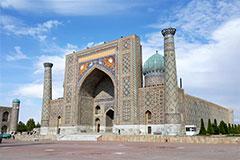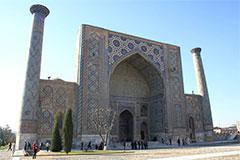There are cities which centuries-old history embodies the history of whole nation and countries, reflecting the way passed by many generations. Samarkand is one of the most ancient cities in the world. As other first centers of human civilization - Babylon and Memphis, Athens and Rome, Alexandria and Byzantium - Samarkand was intended to go through many events and shakes.
Создайте Ваш сайт учителя Видеоуроки Олимпиады Вебинары для учителей
History of Samarkand
Вы уже знаете о суперспособностях современного учителя?
Тратить минимум сил на подготовку и проведение уроков.
Быстро и объективно проверять знания учащихся.
Сделать изучение нового материала максимально понятным.
Избавить себя от подбора заданий и их проверки после уроков.
Наладить дисциплину на своих уроках.
Получить возможность работать творчески.
Просмотр содержимого документа
«History of Samarkand»
Полезное для учителя
Распродажа видеоуроков!
2160 руб.
3080 руб.
2160 руб.
3080 руб.
1970 руб.
2820 руб.
1860 руб.
2660 руб.
ПОЛУЧИТЕ СВИДЕТЕЛЬСТВО МГНОВЕННО
* Свидетельство о публикации выдается БЕСПЛАТНО, СРАЗУ же после добавления Вами Вашей работы на сайт
Удобный поиск материалов для учителей
Проверка свидетельства

















